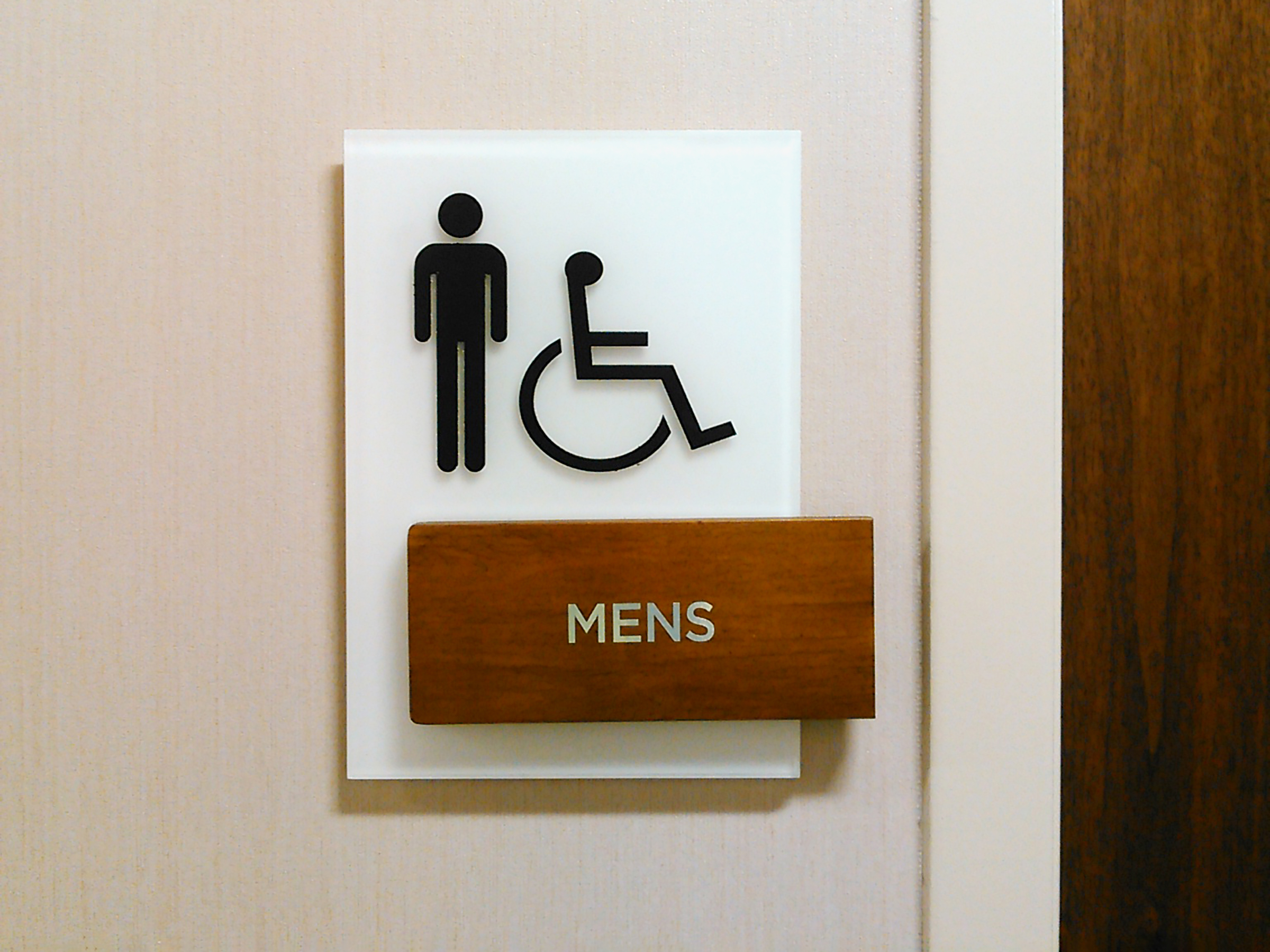The Effect of ADA Signs on Area Availability
The Effect of ADA Signs on Area Availability
Blog Article
Discovering the Secret Attributes of ADA Indications for Improved Accessibility
In the world of access, ADA signs offer as silent yet powerful allies, making sure that spaces are navigable and inclusive for individuals with handicaps. By incorporating Braille and responsive elements, these indications damage barriers for the aesthetically damaged, while high-contrast shade schemes and clear font styles cater to varied visual needs.
Importance of ADA Conformity
Guaranteeing compliance with the Americans with Disabilities Act (ADA) is important for fostering inclusivity and equal gain access to in public rooms and offices. The ADA, enacted in 1990, mandates that all public centers, companies, and transportation solutions accommodate people with specials needs, ensuring they enjoy the exact same legal rights and possibilities as others. Conformity with ADA criteria not only fulfills legal responsibilities but likewise boosts an organization's credibility by showing its dedication to diversity and inclusivity.
One of the crucial aspects of ADA conformity is the implementation of easily accessible signage. ADA indications are made to make sure that people with disabilities can quickly browse through spaces and structures.
Moreover, adhering to ADA guidelines can reduce the danger of lawful repercussions and potential fines. Organizations that stop working to follow ADA guidelines may deal with lawsuits or penalties, which can be both damaging and economically troublesome to their public image. Therefore, ADA compliance is integral to fostering a fair atmosphere for every person.
Braille and Tactile Aspects
The consolidation of Braille and responsive aspects into ADA signs symbolizes the principles of ease of access and inclusivity. These attributes are essential for individuals that are aesthetically damaged or blind, allowing them to browse public rooms with better independence and confidence. Braille, a responsive writing system, is essential in providing written info in a style that can be quickly viewed with touch. It is typically placed under the corresponding text on signage to make sure that people can access the details without visual help.
Responsive components expand past Braille and include increased symbols and characters. These elements are developed to be noticeable by touch, allowing people to recognize area numbers, washrooms, leaves, and various other important areas. The ADA sets particular guidelines concerning the dimension, spacing, and positioning of these responsive aspects to enhance readability and make sure uniformity throughout different environments.

High-Contrast Color Pattern
High-contrast color pattern play an essential role in enhancing the visibility and readability of ADA signage for people with aesthetic problems. These schemes are necessary as they optimize the difference in light reflectance in between text and history, ensuring that signs are conveniently discernible, also from a range. The Americans with Disabilities Act (ADA) mandates the usage of specific color contrasts to accommodate those with restricted vision, making it a critical facet of compliance.
The effectiveness of high-contrast colors hinges on their capability to stand out in numerous illumination conditions, including dimly lit settings and areas with glow. Generally, dark text on a light history or light message on a dark history is utilized to accomplish optimal contrast. Black message on a white or yellow history provides a plain visual difference that helps in fast acknowledgment and comprehension.

Legible Fonts and Text Size
When taking into consideration the design of Your Domain Name ADA signs, the selection of clear font styles and appropriate text size can not be overstated. These elements are essential for guaranteeing that signs are accessible to people with visual disabilities. The Americans with Disabilities Act (ADA) mandates that typefaces have to be not italic and sans-serif, oblique, manuscript, extremely decorative, or of uncommon type. These needs help make certain that the message is conveniently understandable from a range which the personalities are appreciable to varied audiences.
According to ADA standards, the minimum message elevation should be 5/8 inch, and it must raise proportionally with checking out distance. Consistency in message size contributes to a cohesive visual experience, aiding people in navigating settings successfully.
Additionally, spacing in between letters and lines is integral to readability. Ample spacing prevents characters from showing up crowded, enhancing readability. By sticking to these requirements, designers can significantly enhance accessibility, making certain that signage offers its desired purpose for all individuals, view no matter of their aesthetic abilities.
Effective Positioning Strategies
Strategic positioning of ADA signs is necessary for making the most of availability and ensuring compliance with lawful standards. ADA standards state that indications ought to be installed at a height in between 48 to 60 inches from the ground to ensure they are within the line of sight for both standing and seated people.
In addition, indicators should be placed nearby to the latch side of doors to permit very easy recognition prior to entrance. Consistency in indication placement throughout a center boosts predictability, lowering confusion and enhancing general customer experience.

Final Thought
ADA indicators play a crucial role in advertising availability by incorporating attributes that attend to the requirements of people with disabilities. These aspects jointly cultivate a comprehensive atmosphere, highlighting the significance of check my site ADA compliance in ensuring equal accessibility for all.
In the realm of accessibility, ADA signs offer as silent yet effective allies, making certain that rooms are navigable and inclusive for people with handicaps. The ADA, enacted in 1990, mandates that all public centers, employers, and transport services accommodate individuals with handicaps, guaranteeing they enjoy the exact same legal rights and chances as others. ADA Signs. ADA indications are created to guarantee that people with specials needs can conveniently browse via buildings and areas. ADA standards stipulate that signs need to be installed at an elevation in between 48 to 60 inches from the ground to ensure they are within the line of sight for both standing and seated people.ADA indications play an important role in promoting ease of access by integrating features that attend to the demands of people with specials needs
Report this page